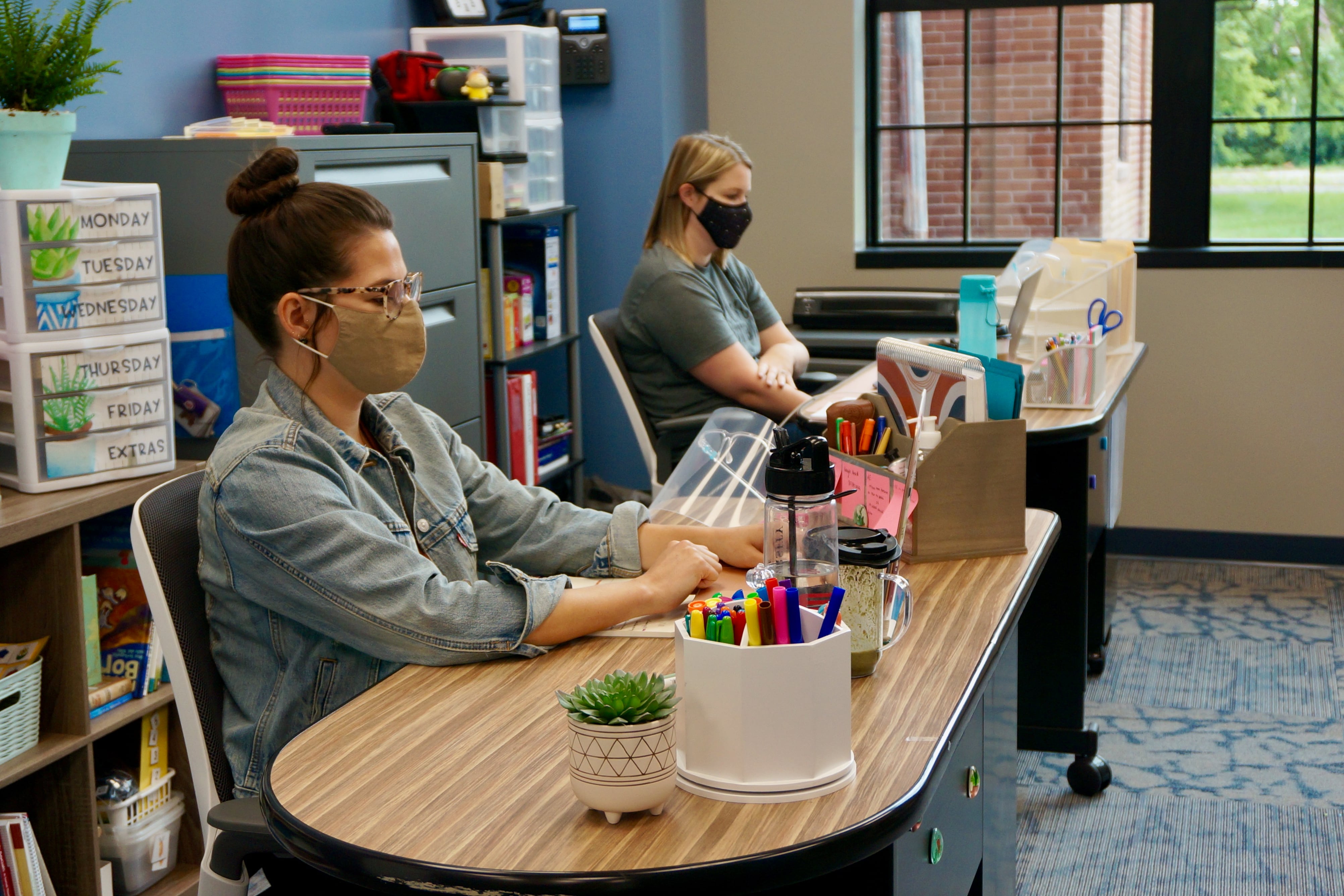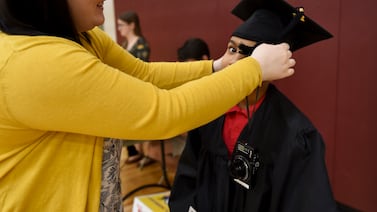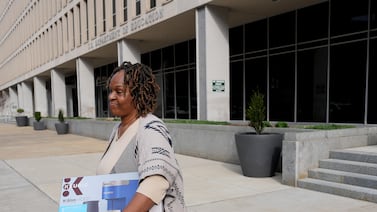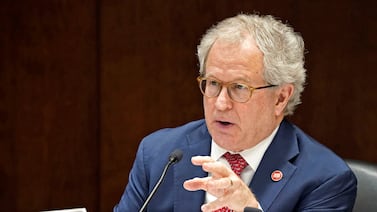Eight days before the campus reopened to students, more than a dozen teachers at an east side charter school sat mostly alone in quiet classrooms watching a training video of the school nurse downstairs in her own office, one of several coronavirus safety precautions.
School begins this week for Paramount School of Excellence, albeit with plexiglass dividers, assigned lunch seats, and music classes largely without singing. The network expects more than half its students to show up, a sharp contrast with Indianapolis Public Schools, which will begin the year entirely online.
More than 16,000 students attend charter schools within IPS boundaries, over 35% of public schoolers in the area. Charter schools typically have more flexibility in planning than do district schools because they are often smaller, making it easier to communicate directly with teachers, parents, and students. At the same time, they are not constrained by teachers union contracts or the pressure that unions can exert. And many of them are more responsive to parent wishes.
The Indianapolis education system allows parents to choose schools and gives school leaders the freedom to pick curriculum, hire teachers, and direct spending. Now, with limited and delayed oversight from state and county officials, the same philosophy is pushing local education leaders to respond to the pandemic in myriad ways.
“From the outset of this, what we wanted to do is put control in the parents’ hands and say, ‘Hey, this is your choice. Do you want to come back?’ “ said Tommy Reddicks, CEO of the three-school Paramount network. In the absence of a consistent, countywide approach, he said, “we felt like we were in a really good position to do the very best we could to safeguard those students whose parents wanted them in school.”
The Indianapolis mayor’s office, which authorizes the majority of the charter schools in the city, said that about half the 43 schools it oversees will offer some form of in-person instruction.
Whether and how to open schools are not easy decisions for anyone — teachers, parents, and school leaders. There’s no absolute right answer, said Brandon Brown, who leads The Mind Trust, an Indianapolis nonprofit that supports charter schools, and “whatever answer you do end up choosing is going to have negative consequences.”
Tucked on the west side of downtown, School 63 is a publicly funded, privately managed neighborhood school. Operator Matchbook Learning expects about 80% of students at the school to return in person, CEO Amy Swann said.
School 63 has created a hybrid middle school schedule, required masks for all students and staff, and moved some classes outside. But returning in person will be especially tough because it is an innovation school, managed under a contract with IPS that includes busing. With the district operating virtually and not running buses, most families will need to provide their own transportation.
While many school districts have faced pressure from teachers and teachers unions to reopen virtually, charter schools may be less likely to see that pushback since their teachers are not typically unionized. At School 63, one teacher who had come out of retirement was particularly concerned about the health risks of going back to classrooms and she chose to retire again, Swann said. She thinks that for the most part, teachers who are worried are also hopeful and excited.
Swann said it makes sense for schools to make their own decisions because communities vary so widely. Although affluent families with large houses can set aside rooms for virtual learning, “a lot of our kids don’t have that,” she said. Some families live in single rooms with a hot plate. Sixteen percent of students are homeless or in foster care, she said.
“We really need to be guided not by the politics that we’re hearing out there, not by what other people are doing and saying, but by the community we serve and by the health department,” Swann said.
Many schools in IPS serve families facing similar challenges, which is one of the reasons leaders stayed committed to an in-person reopening for weeks before shifting to a virtual start. Now, IPS is hoping to meet the needs of some of those students through “hubs” for children who are homeless or have insecure housing.
Because charter schools and networks are typically smaller than districts, they can more easily make adjustments based on specific details, such as their buildings. Purdue Polytechnic High School, a network of charter schools with three campuses, will run its two Indianapolis schools on a hybrid schedule, with most students coming in two days per week and studying remotely the rest of the week, said Scott Bess, head of schools for the network. At the South Bend campus, which has lower enrollment, the network is planning to have students in person four days a week.
While school leaders rely on public health guidance, Bess said he believes that schools should be given wide latitude because the same plans that work for a small campus like Purdue Polytechnic runs wouldn’t necessarily work for a larger high school.
Schools can’t have it both ways, Bess said, by demanding local control in ordinary times and then deferring to other officials in times of crisis. “We’re making the best decision we can, and if it’s wrong, then that should be on me.”
But even as some charter schools consider the wishes of families and the conditions at their campuses, some educators argue that county health officials should take a stronger role in determining what is safe for the entire community and whether and how schools reopen.
“Administrators or teachers, we were not trained to manage a public health crisis,” said Tim Mulherin, chief executive officer of Irvington Community Schools, a charter network that runs elementary, middle, and high schools on the east side.
One reason why, Mulherin said, is because parents can be confused when they see schools taking such different approaches to health and safety. Irvington elementary school students can return to classrooms part-time, while the middle and high schools are entirely virtual.
“They say it’s an advantage to be somewhat independent,” Mulherin said. “But at a time like this, we sure would like most people to be on the same page.”






